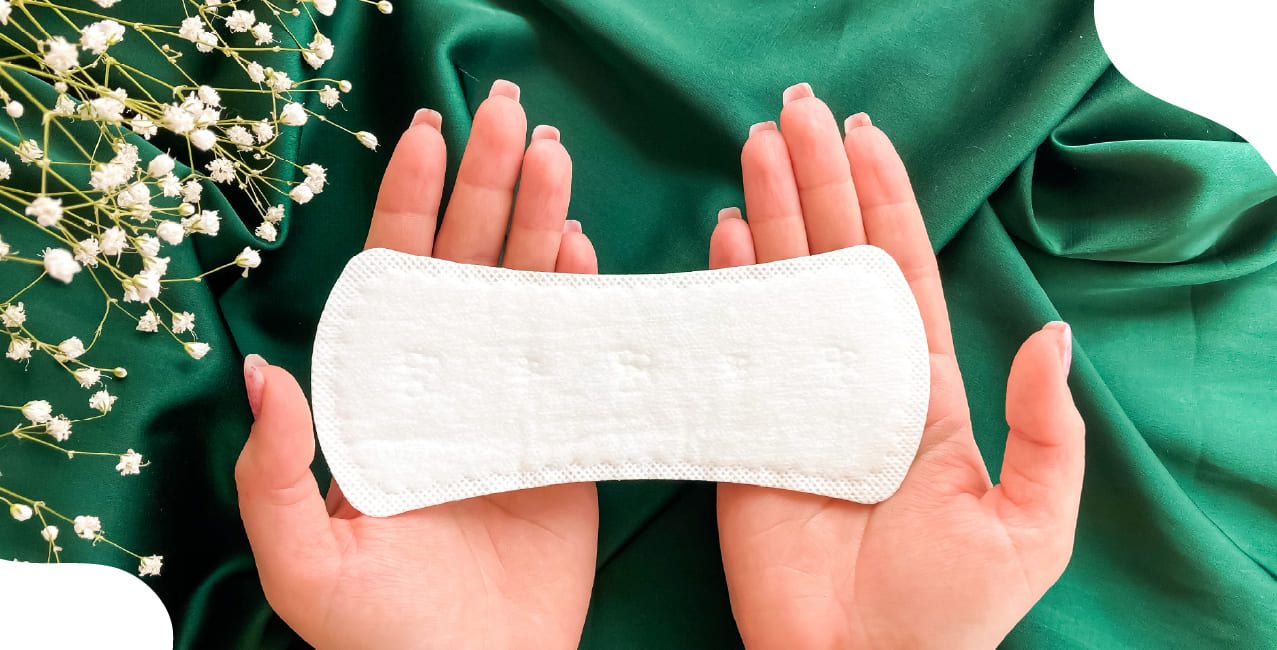
Author
LoansJagat Team
Read Time
5 Min
24 Sep 2025
GST on Sanitary Pads: Complete Guide & Tax Exemption Explained
Key Takeaways
- The government removed GST on sanitary pads in 2018 to make them tax-free.
- Women can now purchase sanitary pads at a lower cost without incurring an extra tax.
- This step supports menstrual hygiene and makes pads more affordable for all.
Goods and Services Tax (GST) is a single tax applied across India on the supply of goods and services. It replaced many indirect taxes to make the system simpler and more transparent.
Earlier, sanitary pads were taxed at 12% under GST, making them less affordable for many women. After public protests and discussions, the government removed GST on sanitary pads in July 2018.
For example, Priya, a college student, used to buy a packet of sanitary pads for ₹100. Earlier, she paid ₹12 as GST, making the total ₹112. Now, with zero GST, she pays only ₹100.
Initial GST Rate on Sanitary Pads
When GST started in India, sanitary pads were taxed at 12%. This means people had to pay extra money, just as they would pay more for chocolates or toys when tax is added.
Let’s understand this with an example.
Anjali is a schoolgirl who buys one packet of sanitary pads every month. The price of the packet is ₹100. But because of GST, she had to pay ₹12 extra, making the total ₹112. For someone who doesn’t earn or who gets pocket money, this was a lot.
Here’s a simple table to show what happened:
This extra cost made it harder for girls and women, especially in villages or poor families, to buy sanitary pads. Many used unsafe things like old cloth because pads were too expensive. That is why many people asked the government to remove the tax.
Government Decision to Remove GST on Sanitary Pads
In July 2018, the Indian government made a big and important decision: they removed the 12% GST on sanitary pads. This happened after many people across the country spoke up and said that pads are not a luxury, but a basic need for every girl and woman.
The government listened to the public. They realised that taxing sanitary pads was unfair, especially when it made them too expensive for poor families. Girls in villages and small towns often missed school during their periods because they couldn’t afford proper pads.
So, from 21st July 2018, the GST Council said:
“Sanitary pads will now have 0% GST.”
The GST rate on sanitary pads changed in July 2018, directly affecting how much consumers paid. The table below shows the price difference before and after the tax removal.
This simple step helped millions of girls and women get better access to menstrual hygiene and dignity.
Bonus Tip: GST removal on sanitary pads encouraged more discussions about women’s health and hygiene in public spaces.
GST Rates and HSN Codes for Sanitary Pads
The table below shows the GST rates and HSN (Harmonised System of Nomenclature) codes for sanitary towels, sanitary napkins, and tampons. As of 21st July 2018, these items are fully exempt from GST, meaning there is no tax applied on their sale.
This shows that under GST, all sanitary towels, napkins, and tampons carry a 0% rate, ensuring they remain completely tax-free for consumers.
Impact of GST on the Sanitary Pads Industry
When GST was initially implemented, sanitary pads were levied at a rate of 12%, aligning them with luxury or non-essential commodities. This imposition escalated costs for consumers and provoked widespread concern across the nation regarding affordability and accessibility.
In response to mounting public pressure, the government abolished GST on sanitary pads effective 21st July 2018, thereby reducing the applicable rate to 0%. Superficially, this appeared to be a significant step forward for women’s health and financial relief. For instance, Rani, a regular consumer, previously incurred a total of ₹112 for a pack of pads priced at ₹100 due to the 12% GST; post-reform, her expenditure decreased to the base price of ₹100.
However, the scenario encompasses a more nuanced dimension. Manufacturers are now unable to claim Input Tax Credit (ITC) on essential raw materials such as cotton, plastic, and packaging components. Consequently, their production costs remain elevated, which may constrain substantial reductions in consumer prices despite the nominal tax elimination, ultimately limiting the tangible financial benefit for end-users.
Bonus Tip: The 0% GST rate sets an example of how tax policies can address social concerns and support gender equality.
Positive and negative impacts
The removal of GST on sanitary pads brought both benefits and challenges. The table below highlights the positive and negative impacts of this decision.
Overall, while the move reduced the tax burden and improved access, the absence of ITC for manufacturers has limited the actual price drop for consumers.
Input Tax Credit on GST for Sanitary Pads
Sanitary pads are exempt from GST, which means no tax is charged on the final product. However, the raw materials used to make them, like absorbent polymers, tissue, glue, and non-woven fabric, are still taxed at 12% to 18%.
Since the finished product is tax-free, manufacturers cannot claim Input Tax Credit (ITC) on these inputs. This creates an inverted tax structure, where companies pay GST on raw materials but cannot recover it.
As a result, manufacturers bear the extra cost, and prices of sanitary pads may not reduce much despite the GST exemption.
How GST Exemption on Sanitary Pads Affects Women in Rural India
The decision to exempt sanitary pads from GST was meant to make them more affordable and accessible. While this move helps reduce the tax burden on the final product, its real impact on women in rural areas is mixed.
Positive Impact
- Lower Prices in Theory: With no GST on sanitary pads, women in rural India should be able to buy them at a lower price.
- Encouragement of Use: Cheaper pads can encourage more rural women to switch from unsafe alternatives like cloth or ash.
- Improved Health: Wider access to sanitary pads helps reduce infections and promotes better menstrual hygiene.
Challenges
- No Input Tax Credit (ITC): Manufacturers pay GST on raw materials but cannot claim ITC since pads are tax-free. This keeps production costs high.
- Limited Price Drop: Because of higher input costs, the final retail price of pads has not reduced much, especially for low-cost products used in rural areas.
- Distribution Issues: In rural regions, lack of supply chains and awareness campaigns means that sanitary pads may still be unaffordable or unavailable, despite the tax exemption.
GST exemption on sanitary pads is a welcome step, but without stronger supply, subsidies, and awareness, rural women may not see a major change in affordability. More policies and local initiatives are needed to ensure that the exemption truly benefits women in villages.
Conclusion
The removal of GST on sanitary pads in July 2018 was a positive step for promoting women’s health and hygiene. It showed that the government listened to public concerns and took action to make these essential products more affordable.
However, because manufacturers lost the benefit of Input Tax Credit, the cost of making sanitary pads stayed the same. As a result, the price reduction for consumers was limited.
In simple words, while the intention was good, the real benefit to women was not as big as expected. To make sanitary pads truly affordable, more support is needed for both manufacturers and consumers.
FAQ’s
1. Are sanitary pads considered an essential item under GST?
Yes, sanitary pads are treated as essential goods and kept under the GST exemption list.
2. How does Gthe ST exemption affect rural women?
While the exemption was meant to make pads affordable, rural women still face issues of access and awareness, limiting its real impact.
3. Do manufacturers benefit from the exemption?
Not entirely. They pay GST on raw materials but cannot claim credit, which increases their production cost.
4. Has the exemption encouraged hygiene awareness?
Yes, the move highlighted menstrual hygiene as a public health issue, sparking more discussions and awareness drives.
5. What else is needed beyond GST exemption?
Better distribution networks, government subsidies, and education campaigns are necessary to make sanitary pads truly affordable and accessible.
About the Author

LoansJagat Team
‘Simplify Finance for Everyone.’ This is the common goal of our team, as we try to explain any topic with relatable examples. From personal to business finance, managing EMIs to becoming debt-free, we do extensive research on each and every parameter, so you don’t have to. Scroll up and have a look at what 15+ years of experience in the BFSI sector looks like.

Quick Apply Loan
Subscribe Now


